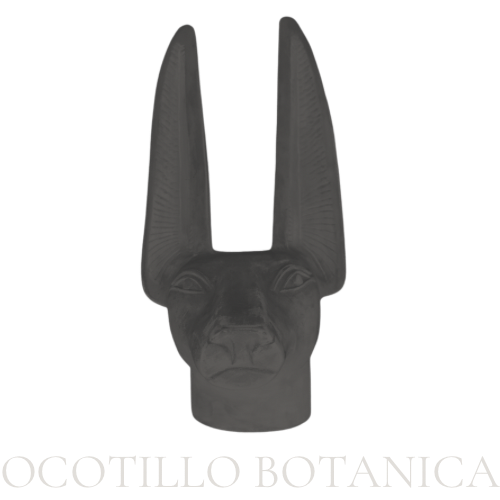Ocotillo Botánica
Stela of Ra Horakhty
Stela of Ra Horakhty
Historical Reproduction - Vintage - 2001
DeAgostini, The Glory of Ancient Egypt, Collectors Figurine
Issue No. 44 - Statue Only
Approximately 5” tall
STELA OF RA HORAKHTY
The Stela of Ra Horakhty is an ancient Egyptian artifact dating back to the New Kingdom period, around 1279–1213 BCE. This stela, also known as the "Great Hymn to the Aten," is a testament to the religious beliefs and artistic achievements of ancient Egypt during the reign of Pharaoh Akhenaten.
Carved from limestone, the Stela of Ra Horakhty depicts the sun god Ra-Horakhty, the fusion of the sun gods Ra and Horus, seated on a throne. Ra-Horakhty is depicted with the sun disk atop his head, flanked by falcon's wings, symbolizing his role as the god of the sun and the sky. He holds the ankh, the symbol of life, in one hand and the was scepter, symbolizing power and dominion, in the other.
The stela is inscribed with hieroglyphic texts that comprise the "Great Hymn to the Aten," a hymn of praise and adoration to the sun god Aten. This hymn, composed during the reign of Akhenaten, extols the virtues of Aten as the creator and sustainer of all life, the source of light and warmth, and the divine force behind the natural world.
The Stela of Ra Horakhty is significant not only for its religious content but also for its historical and cultural importance. It provides valuable insights into the religious reforms of Akhenaten, who promoted the worship of Aten as the sole god of Egypt and sought to diminish the influence of traditional Egyptian deities.
The Stela of Ra Horakhty is part of a larger body of religious texts and inscriptions associated with the Amarna Period, a time of profound religious and political upheaval in ancient Egypt. Akhenaten's monotheistic beliefs and his attempt to centralize religious authority around Aten had a lasting impact on Egyptian society and culture.
Today, the Stela of Ra Horakhty is housed in the collections of various museums around the world, where it continues to be studied and admired for its historical, religious, and artistic significance. It stands as a testament to the rich cultural heritage of ancient Egypt and the enduring legacy of its religious beliefs and practices.
Couldn't load pickup availability
Share








